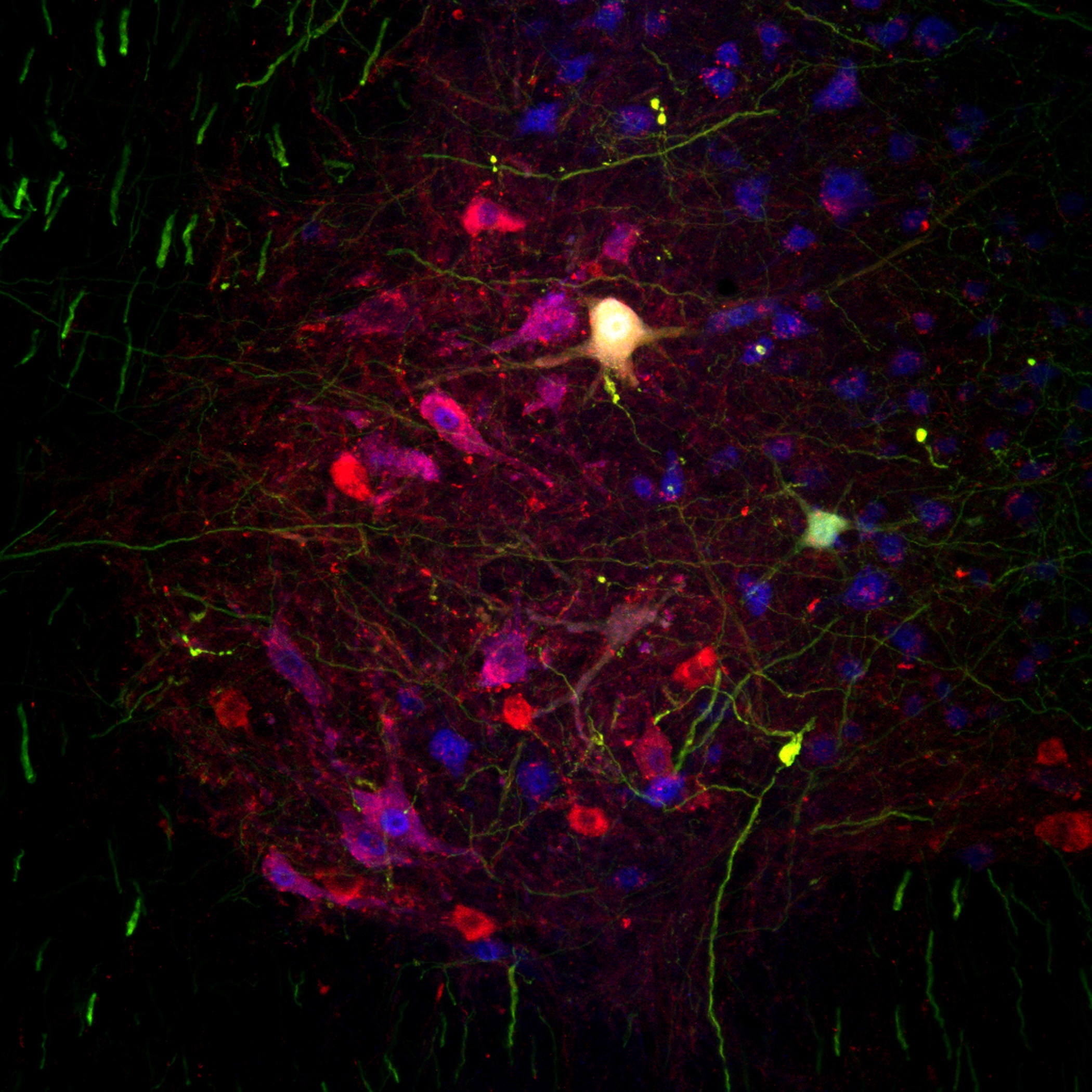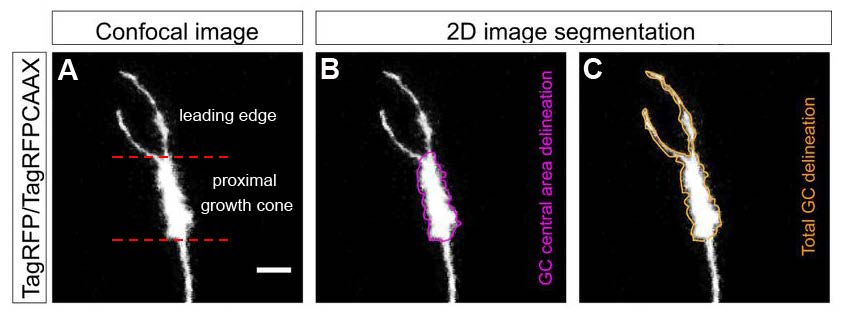Motor Neurons in the ventral horn of the spinal cord of an ALS mouse model.
Chronic ethanol exposure and withdrawal in rats produce opposing effects on glutamate release in the basolateral amygdala from axons originating in subdivisions of the medial prefrontal cortex, chemogenetic inhibition attenuates the increase in anxiety-like behavior associated with ethanol withdrawal.
Authors demonstrate that ApoE deficiency and the ApoE4 human isoform both impair hippocampal neurogenesis in adult mice and give insight into how ApoE may influence hippocampal-related neurological diseases.
Omri Nachmani and Gunnar Blohm talk about their paper on how sensorimotor prediction and uncertainty modulate oculomotor tracking behavior, and share their thoughts on publishing through the Registered Report format.
Synaptic boutons in the muscle of a larval fruit fly
See the most-shared articles of January/February 2020; Volume 7, Issue 1
Authors demonstrate that long-distance axon regeneration can drive recovery of respiratory function following cervical spinal cord injury in rats.
Authors describe the in vivo behavior of mitochondria at the growth cone of elongating retinal axons in zebrafish.
Results of this study suggest that decreased responding to food-associated cues when food becomes less desirable are due to changes in the excitability of neurons in the nucleus accumbens.
Ramendra Saha tells the story behind his first publication as senior author on histone H2A.Z hypervariant function and the challenges he faced as a new independent investigator.
FOLLOW US
TAGS
CATEGORIES




.jpg)



 RSS Feed
RSS Feed




